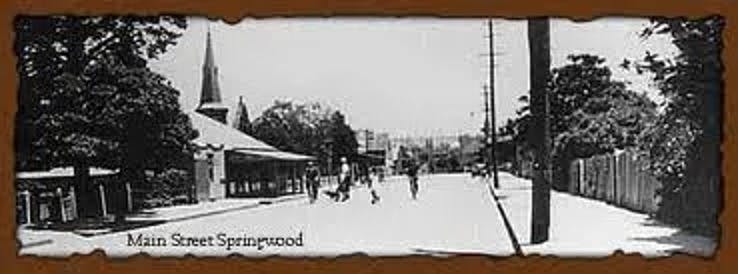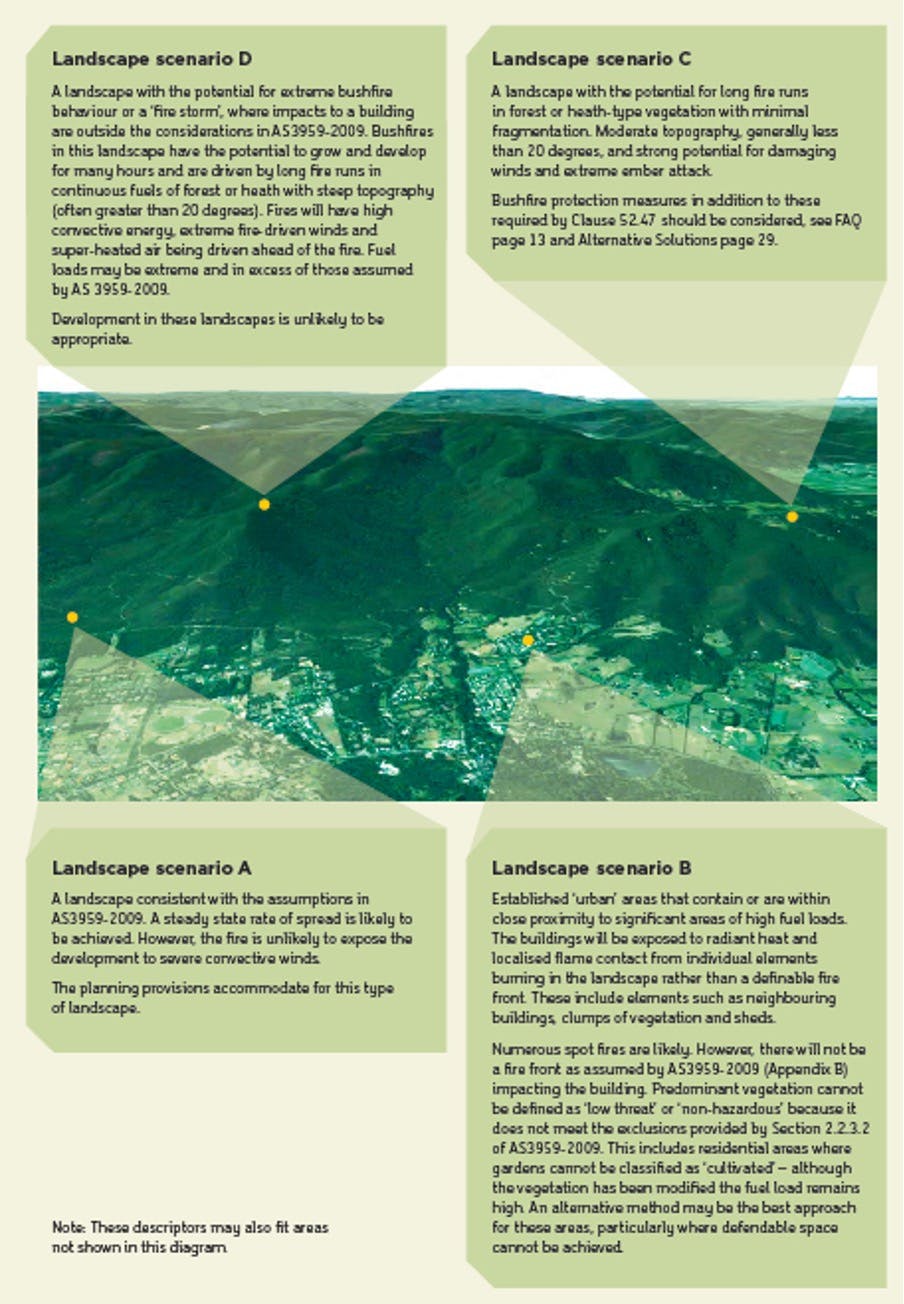Reduce the Fuel Reduce the Risk
Nov 11, 2014
A core action to reduce the risk of home loss due to fire is fuel reduction. This preventive measure entails removing fire promoting trees from around our homes. The other two core actions are ensuring the house is an ember-resistant structure and that householders have a thorough bushfire safety knowledge. However I here elaborate only on the first, fuel reduction, as this is discouraged by law. In the following article of this series, Top Down Culture and Fire, I write more about influence of authority and culture on fire prevention.
It is very hard to reduce the fuel and create fire protective properties when we have fire promoting trees in our gardens and around our power lines. Yet this is a controversial issue here in the Blue Mountains as fire promoting trees are often protected native species and despite the many homes lost due to the October fires in 2013, many people do not want to see them go from their backyards and streets.
The current paradigm is one where we have become oblivious to the fact that we live in the most flammable type of forest in the world; on the most fire vulnerable location in such forests, (i.e: on the top of ridges), with warmer climatic conditions, and in homes surrounded by fire promoting trees and next to power lines.
And yet homeowners in suburban settings here are discouraged by NSW legislation to remove the flammable species to create fire protective gardens. With the exception of the new 10/50 rule allowing homeowners to remove trees within 10 metres of their home, permission is not granted to remove indigenous species despite their flammability. Permission from council is required even to remove species that are classified an environmental weed such as the flammable radiata pines.
Fire promoting trees cause dry conditions and accumulate fuel on the ground. NSW legislation hinders the efforts of homeowners to reduce fuel and reduce the risk by not allowing the removal of such trees. We need to consider the impact of flammable trees around our homes and power lines.
The impact of flammable trees
The kind of trees that need to be removed from our gardens and power lines if we want a fire protective garden are fire promoting trees. They include the following characteristics
Accumulation of ground fuel from leaf litter.
Strong competition hinders the growth of fire retardant plants and reduces humidity levels on the ground.
Flammable trees, (trees with significant amounts of volatile oils).
As most fires travel along the ground, leaf litter fuel reduction is an essential core action to reduce the risk. Fuel reduction requires
1. Removal of fire promoting trees close to power lines.
2. Removal of fire promoting trees away from houses.
These two actions should be standard home loss prevention in the Blue Mountains, and yet fire promoting trees around our homes and power lines are a protected part of the residential landscape.
Power lines and trees
1. Is there evidence that the proximity of trees next to fires increase the risk of home destruction due to fire?
Yes. The recent Four Corners documentary FIre in the Wire from ABC revealed that most of the bushfires causing death and loss of houses in NSW and VIC over the last 20 years have been started by electricity infrastructure.
As shown in the documentary the October 2013 fire in Winmalee was caused by tree branches falling onto a power line on a hot dry windy day. Nearly 200 homes were lost due to that fire and this incident alone is good enough evidence of the fire risk of trees next to power lines.
2. Is the risk of fire caused by trees close to power lines greater now than it has been in the past?
Yes, greater than ever. This is due to two factors:
1.Trees next to power lines are now fully-grown and typically large fuel producing flammable trees. As Phil Cheney, Senior Principal Research Scientist at the CSIRO, says, “never have fuel levels been so high”. Establishment of power lines in most of our streets occurred decades ago, once the bush had been cleared for building houses and so there were no trees next to power lines. Historical photographic evidence shows that Springwood streets were clear of tall fire promoting trees.

Photo from Blue Mountains Library. early 1900s
2.The October 2013 fires in the Blue Mountains marked the entering of a new era of extended fire seasons. Bush fires now start in spring and stretch-well into autumn as we now expect warmer and drier climate conditions. Hot dry conditions around the ground increase the risk of fire spreading rapidly as it occurred in the Winmalee fires. Melbourne University research fellow in climate science Sophie Lewis warns that “we need to plan for a longer fire season. It’s something we’re going to expect, looking to the future.” Her findings are supported by a report by the International Journal of climatology and the Research Centre at the University of NSW. See more here The Age
3. What is the researched recommended space between trees and power lines?
According to fire expert Joan Webster OAM, power lines “should be no closer to a tree than its full-grown height” (from Bushfire Safety Tips, third edition, page 38). This author’s advice should be taken seriously if we are to prevent destruction due to fire. As NP Cheney PSM, (Former head of CSIRO Bushfire Behaviour and Management) says: “In compiling this book Webster OAM has drawn on consultations with fire scientists over many years.” (Page 4 Bushfire Safety Tips, third edition). This author is an authority on fire. In 2010 she received the Order of Australia Medal: ‘For service to the community in raising awareness of bushfire safety‘ and I have used her findings as source of scientific evidence in this article.
Fire promoting trees around the house
This graphic from the Victorian Country Fire Authority (CFA) booklet Planning for Bushfire helps to put the Blue Mountains residential landscape into perspective.

Most residential areas in the Blue Mountains would be, in this classification, either landscape scenario D or C. Note the comment for landscape scenario D that “Development in these landscapes is unlikely to be appropriate.” If the Blue Mountains had never been settled, and a planning application were to be submitted today, it would probably be refused. Planning authorities would rate the landscape factors as in excess of what our most fire safe building code is designed to withstand.
In non-technical terms, what are these high risk landscape factors? Houses sited on ridges and escarpment edges above steep inaccessible valleys of very highly flammable trees and shrubs. Some of our house sites place the houses not just in the path of a possible fire, but right on top it! The small distances between houses and flammable bush are such that if a forest fire really gets going on a hot day, many houses will be not just under threat from the fire, they will be in the fire.
Note that the fire assessments for each landscape scenario combine landscape factors with building construction for fire safety. The two always have to be considered together. Joan Webster OAM (The Complete Bushfire Safety Book) describes how ordinary well maintained houses of many kinds of construction can be kept safe through fire with an able-bodied adult at home to put out spot fires, provided sensible landscape modifications have been made around the home.
This is not to say “stay and defend” as that is another matter, but that by all means make your home site defendable and at least less flammable in the first place by removing, as Webster says natives and conifers “within 50 m of your house” (Bushfire Safety Tips Third edition, page 39)
According to their relative fire hazard many eucalyptus, turpentines and and pines are at the top of the list. Deciduous trees, for example, fruit trees, oaks, maples, elms and poplars are used as fire retardant plants.
To create a fire protective garden we need to grow fire retardant plants and trees. To do this we need to remove the fire promoting trees from our gardens as they are competitors. The document Fire Retardant Plants from the CFA explains flammability and the role of fire retardant plants and trees.
Conclusion
Legislation discourages the removal of trees around homes and power lines in the Blue Mountains. We live in a highly flammable landscape and yet we are limited in our capacity to make our homes and neighbourhoods safer by removing fire promoting trees around our homes and power lines. Fuel reduction is an essential core action for preventing more home loss due to fire.
Given the history of fire caused by power lines in Australia, the new climatic conditions, and the scientific research by experts; we have ample evidence to say that power lines close to trees does increase the risk of fire starting, spreading, endangering us, and increasing the risk of destruction.
Webster’s advice that power lines should be “no closer to a tree than it’s full-grown height” should be taken seriously.
Fuel reduction entails some tree removal because some trees can build up enough fuel to increase fire risk on the ground in one hot windy day. In other words we cannot control fuel reduction if we have a fuel-producing tree close to power lines or our home.
Fuel reduction entails some tree removal because fire promoting trees are competitors. Fire promoting trees hinder the growth of fire retardant species under and around the trees making it very difficult to create a fire protective garden. According to scientific research and historical records, clearing fire promoting trees away from power lines and our homes does reduce the risk of fire destruction. The next article, Top Down Culture and Fire, outlines some of the issues concerning authority and culture which help to explain the flammability of our suburban landscape in the Blue Mountains.